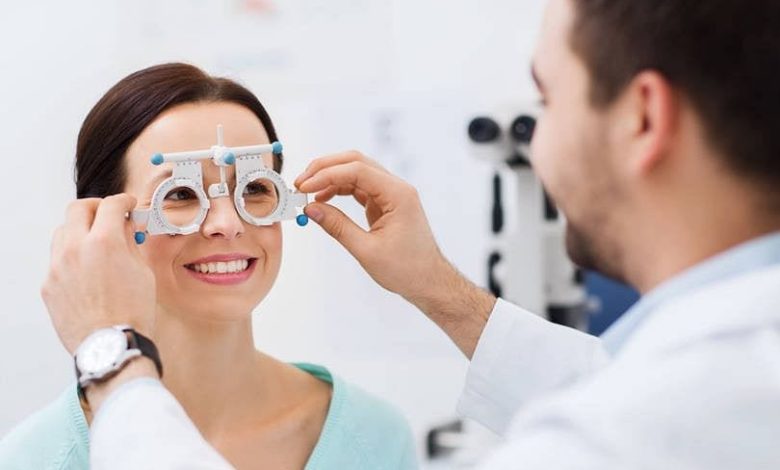Treating the Inflammatory Component of Dry Eye Disease

Dry eye disease results from a convergence of factors that result in inflammation of the cornea and conjunctiva. Current treatment focuses on addressing inflammation, targeted to the severity level.
Your ability to treat dry eye disease (also known as dysfunctional tear syndrome), is based on your understanding of the central role inflammation plays in the disease process.
Dry eye disease is characterized by decreased tear production and/or increased tear evaporation. Both of which lead to and result from inflammation.
In dry eye disease there is a downward spiral in which inflammation produces injury. Which triggers further inflammation. If not halted or reversed, This cascading process can lead to ocular surface tissue damage with effects that range from mild to debilitating.
Ironically, A primary symptom of dry eye disease may be acute tearing and blinking, causing confusion for some patients. But ultimately your eyes will start cause is decreased tear quantity and/or quality and the ensuing inflammation.
Tear Quality and Quantity
Numerous factors affect tear quantity (either by impacting tear production or evaporation), including environmental stresses. Low humidity, exposure to wind or drafts, tasks requiring prolonged visual attention and therefore reduced blink rate. A long list of common medications.
Such as anticholinergics (including antihistamines, antispasmodics, antidepressants, and diphenoxylate/atropine), systemic isotretinoin, interferon, postmenopausal hormone replacement therapy, and antiandrogenic agents. Of my patients with dry eye disease, 50% to 70% are taking at least one of these medications.
Tear quality can be altered in patients with meibomian gland disease. Because the altered lipid tear components characteristic of the disease can break down in a process that produces free radicals.
These can incite inflammatory responses in the eye similar to the way lipid alterations in the cardiovascular system. Which increase vascular inflammation.
The Inflammatory Chain of Events
Ocular inflammation leads to the symptoms of dry eye disease by multiple mechanisms. First, inflammation reduces the threshold of nerve stimulation. Making the many nocireceptors of the cornea even more sensitive. (The cornea has the highest density of nerve endings of any body tissue.)
Patients with mild dry eye disease have more symptoms than signs. Possibly because the inflammatory mediators are creating discomfort through a direct effect on nerves before the longer-term physiologic changes that produce signs have occurred.
In time, however, inflammation decreases corneal sensation, downregulating the feedback loop that would normally increase tear production in response to noxious stimuli.
The result is diminished tear production. Second, inflammatory conditions result in increased production of metalloproteinases. Which break the tight junctions holding the epithelial cells together. Once these junctions are broken, cells die and slough off, creating punctate erosions.
Damage to the epithelial tight junctions allows a vital dye such as fluorescein to penetrate the mature tissue layers and stain.
Third, corneal epithelial cells change differentiation pathways under inflammatory conditions to become more skinlike. (ie, squamous metaplasia).
If you are suffering from the dry eye disease, Your cornea and conjunctiva, The new differentiation pathway results in increased production of cornified envelope membrane proteins. Making these tissues less wettable, so that mucins (and therefore the rest of the tear film) are less able to adhere.
Decreased tear secretion by the lacrimal glands also occurs and is accompanied by decreased production of some antiinflammatory proteins. Such as interleukin‑1 receptor antagonist and lactoferrin, an iron‑containing protein that scavenges free radicals.
Once inflammatory processes are set in motion, the symptoms of dry eye disease emerge. However, if inflammation is halted or reversed before too much damage is done. The corneal cells can return to their normal structure and function and symptoms can improve tremendously.
A Stepwise Approach to Dry Eye Disease Treatment
Because they are severity-based, I use the International Dry Eye WorkShop (DEWS) recommendations for treatment. Which to a large degree are based on the earlier recommendation of a Delphi panel.
At severity level 1 (The least severe), oral supplements with essential fatty acids are recommended, because of their potential antiinflammatory effects. At level 2, short-term steroids may be used with topical cyclosporine.
Tetracycline antibiotics can be added at level 2 or 3.
Tetracyclines, despite being classed as antiinfectives, exert their beneficial effects in dry eye disease through a secondary mechanism. They are also antiinflammatory.
Cyclosporine acts by several mechanisms. Including prevention of programmed cell death (apoptosis) in the epithelial cells and inhibition of T cell activation.
Steroids have some of the same actions as cyclosporine (although perhaps with less effect on T cell activation).
Steroids also decrease production of inflammatory cytokines and prostaglandins by the epithelial cells.
Nonsteroidal antiinflammatory drugs (NSAIDs) have had little application in dry eye disease because of their limited effect on the specific inflammatory mediators involved in the condition.
Also, NSAIDs have been associated with corneal melting, which is more common in dry eye patients. (Some NSAIDs, particularly diclofenac, increase metalloproteinase production, which can negate their beneficial effects.)
For a patient with moderate dry eye disease (level 2 or 3), I would perform a Schirmer test to determine tear volume.
If the patient has adequate tear volume and secretion, I would target treatment toward addressing inflammation. The treatment regimen would include some combination of omega‑3 fatty acid supplementation. Topical cyclosporine (2 to 4 times per day) for at least 6 months, and a 1-month course of a topical steroid (fluorometholone or loteprednol) 4 times per day for 2 weeks, then reducing to twice a day for 2 weeks.
If there is concomitant meibomian gland disease, I would also add an oral tetracycline, usually doxycycline, 20 mg twice a day for 1 month.
THE BOTTOM LINE
Inflammation plays an essential and central role in dry eye disease or eye problems, causing both the irritation symptoms and the ocular surface signs.
The presence of corneal or conjunctival staining indicates underlying inflammation on the eye surface—the changes that lead to staining do not occur without inflammation. We now have an increasing number of options to treat dry eye disease and a clear framework for treatment with the DEWS Report.




